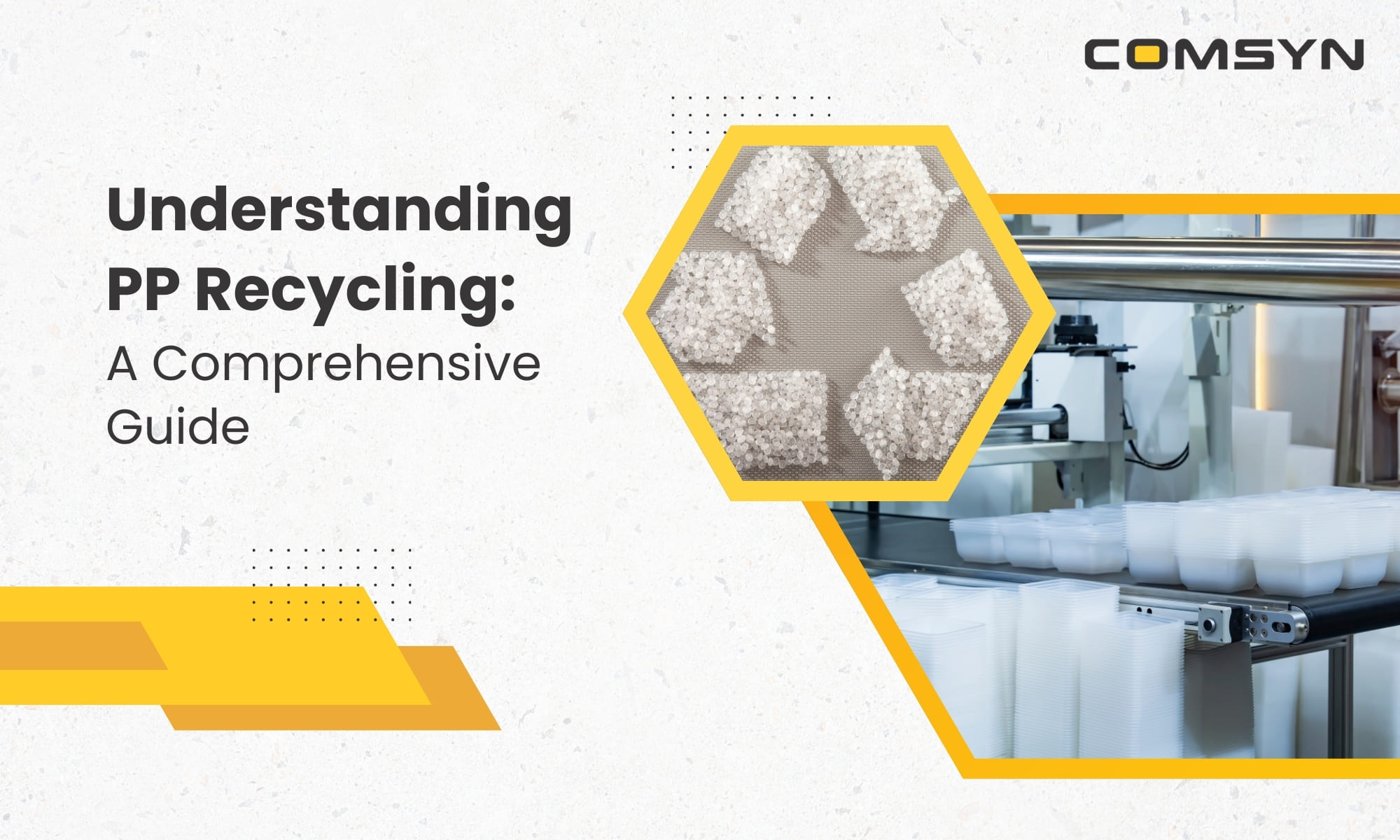Plastic pollution is one of the most pressing environmental issues of our time. With millions of tons of plastic waste generated each year, effective recycling methods are essential to mitigate environmental damage. Among various types of plastics, polypropylene (PP) stands out due to its widespread use and unique properties. This comprehensive guide explores the intricacies of PP recycling, from understanding what polypropylene is to the detailed recycling process and its significance in various industries. Polypropylene, commonly abbreviated as PP, is a thermoplastic polymer used in many applications. Known for its toughness, resistance to chemical solvents, and high melting point, PP is prevalent in packaging, automotive parts, textiles, and consumer products. The PP recycling symbol is typically identified by the number 5 within the recycling triangle, indicating that the material is recyclable. PP is favored for its versatility and durability. It makes everything from plastic containers and packaging to car components and textiles. Its high melting point makes it ideal for sterilization applications, such as medical equipment and food containers. However, despite its recyclability, PP is often under-recycled compared to other plastics like PET (polyethylene terephthalate) and HDPE (high-density polyethylene). The recycling process for polypropylene involves several key steps, each crucial for ensuring the material is efficiently processed and repurposed. The efficiency of how PP is recycled depends significantly on the technology and processes used at each stage. Advanced recycling facilities employ state-of-the-art equipment to optimize each step, ensuring high-quality recycled PP. Polypropylene is used in numerous industries, all of which can benefit from recycling efforts. Some key industries include: Packaging Industry: Uses recycled PP to produce containers, films, and packaging materials. The packaging industry is one of the largest consumers of PP, and recycling helps to reduce the demand for virgin plastics. Automotive Industry: Employs recycled PP for making various car parts, reducing reliance on virgin plastics. PP’s durability and resistance to chemicals make it ideal for automotive components. Textile Industry: Utilizes recycled PP fibers in manufacturing carpets, upholstery, and apparel. Recycled PP fibers are used in a variety of textile applications, contributing to sustainable fashion and home furnishings. Consumer Goods: Includes products like reusable containers, toys, and furniture made from recycled PP. Many consumer products can be made from recycled PP, promoting a circular economy. Medical and Healthcare: Recycled PP is used in manufacturing medical devices and packaging that require sterilization. The medical industry benefits from the high melting point and chemical resistance of PP. Recycling polypropylene is vital for sustainable development, reducing waste, and conserving resources. While challenges exist, advancements in recycling technologies are improving the efficiency and quality of recycled PP. By fostering a culture of recycling and supporting industries that use recycled materials, we can significantly impact environmental conservation. Encouraging the use of recycled PP not only benefits the environment but also supports economic growth and innovation in sustainable practices. Partnering with Comsyn allows you to support a greener future while gaining access to high-quality recyclable materials. Visit comsyn to discover how we can help your business achieve its sustainability goals. 1. Why is polypropylene difficult to recycle? Polypropylene’s difficulty in recycling arises from its diverse applications, contamination issues, and the degradation of its properties during recycling. Sorting PP from other plastics and cleaning it sufficiently to avoid contamination are significant hurdles. Additionally, PP’s high melting point can pose challenges during the recycling process. 2. What happens to polypropylene in landfill? In landfills, polypropylene does not decompose easily. It can persist for hundreds of years, contributing to long-term environmental pollution and occupying valuable landfill space. The inert nature of PP means that it remains largely unchanged, leading to potential environmental hazards. 3. What is the lifespan of polypropylene? Polypropylene products can last anywhere from a few years to several decades, depending on their use and environmental exposure. In typical conditions, PP can last for about 20-30 years. Its durability and resistance to environmental factors make it a long-lasting material in various applications. 4. What can polypropylene be recycled into? It can be recycled into automotive components, textiles, and consumer goods like toys and furniture. The versatility of recycled PP makes it valuable for a wide range of applications, promoting a circular economy. 5. Is recycled polypropylene food safe? Recycled polypropylene can be food-safe if processed under strict standards to ensure the removal of contaminants. However, it must meet regulatory requirements to be approved for food contact applications. The safety of recycled PP for food contact depends on the purity of the material and the thoroughness of the recycling process. 6. What is the recycle code for polypropylene? The recycle code for polypropylene is 5, denoted by the recycling symbol with the number 5 inside. This indicates that the material is recyclable and should be collected for recycling programs. Recognizing this symbol helps consumers and waste management professionals identify and properly handle PP for recycling.Understanding PP Recycling: A Comprehensive Guide

Polypropylene (PP) recycling is a critical component in the modern approach to sustainable waste management. This guide aims to provide an in-depth understanding of PP recycling, including its importance, challenges, and the process involved.Introduction
What is Polypropylene?
The Importance and Challenges of Polypropylene Recycling
Importance:
Challenges:
The Process of Recycling Polypropylene
Which Industries Need to Recycle Polypropylene?
Conclusion
FAQs
- About Us
- Products
- Markets Served
-
- Investor Relation
- Board Of Directors
- Committees Of Board
- Corporate Governance
- Financials
- Annual Report
- Key Managerial Positions
- Shareholding Pattern
- Notices
- Policies Programme
- Announcements
- Statement of Investor Complaints
- Unpaid & Unclaimed Dividend
- Prospectus
- Investors Contact
- Subsidiary Financials
- IEPF
- Preferential Issue – 2024
- MOA & AOA
- Integrated Filing
- Sustainability
- Contact Us
- TechTex
- Brochure

